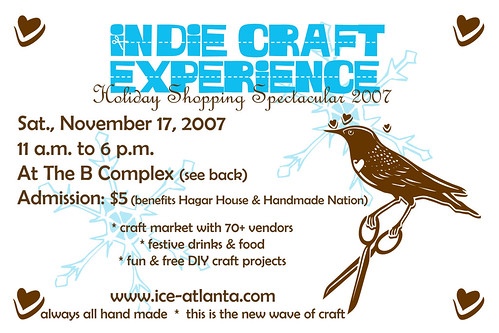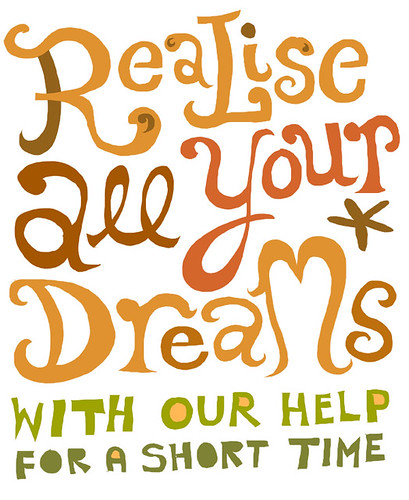I’ve been wondering why the networks don’t respond to the writer’s strike by simply running high-end infomercials. That is: Just let Nike or whoever buy an hour of prime time, and let them do what they want. Probably they’d go all out, and win an Emmy.
I’m not endorsing this. And I would personally find it depressing. I would find it depressing as an entertainment consumer, and as a professional writer who worries about the future of the market for writing. But that’s probably part of why I’m surprised it hasn’t happened.
But yesterday I asked a marketing fellow I know why he thought it hadn’t happened. He said: “That’s a great idea!”
Uh oh. . . .
But of course there is solution: Buy something to make your toilet express more about who you are. You are a person who decorates the toilet. That’s who. Details about vinyl stickers with various cool images, at $20 per, are at Vital Industries on Etsy. Via BB.
 Last Exit To Nowhere: Why imaginary brands can be even better than the real thing.
Last Exit To Nowhere: Why imaginary brands can be even better than the real thing.
There is no shortage of logos in the world, no dearth of brands striving for consumer allegiance and no chance that the creation of new brands and logos will cease. In fact there’s an interesting subset of brands and logos that don’t bother with what seems like a crucial component: an actual product, service or company. Consider the Weyland-Yutani Corporation. It’s part of the fictional universe depicted in the 1979 film “Alien” and its sequels; Nostromo, the spaceship freighter in the first movie, is a Weyland-Yutani vessel. The company doesn’t do much in the way of branding in, you know, reality. But as it turns out, it’s possible to buy yourself a Weyland-Yutani T-shirt, or even a Nostromo T. It also turns out many people have….
Continue reading at the NYT Magazine site.
Additional links: Last Exit to Nowhere; more on imaginary brands on this site, and elsewhere.
* Bonus link: The column mentions that the creator of Last Exit to Nowhere used to be in a band called Consumed. You can hear a couple of their tracks (and buy CDs) at the Fat Wreck Chords site.
Murketing readers know this imaginary brands topic is a regular point of interest for me, and I thank everyone for past comments on this site that helped prod me toward today’s column. Update: See comments for more examples.
I think from the tags that this is taken inside a Costco.
Posted Under:
Flickr Artifacts by Rob Walker on November 18, 2007
Comments Off on Flickr Interlude
The subject of book covers is on my mind quite a bit lately, so I was interested in this: A site called The Book Design Review picks out its favorites of 2007.
I don’t know that I have a single favorite, several are quite nice. There’s a way to vote at the bottom of the entry, and also to view the results whether you’ve voted or not, and it’s interesting to see which ones lead the pack.
Here are the site’s earlier roundups from 2006, and from 2005.
Fun to look at.
Posted Under:
The Designed Life by Rob Walker on November 17, 2007
Comments Off on Book covers
“Corner of pleasant valley rd. & césar chavez, austin, tx.”
To the contrary, this astonishing WSJ story suggests the homeless are much on our minds — as pop culture entertainment!
The main focus of the piece is a possibly schizophrenic homeless man in Los Angeles who has been adopted by three young brand-makers as the iconic centerpiece of their new line, named “The Crazy Robertson” in his honor. Featuring “stylized images” of the man, the includes a $98 hoodie “that has a graphic of him dancing and the phrase ‘No Money, No Problems’ on the back.” Available at Kitson.
Adds the WSJ:
The repackaging of [this homeless guy] as a fashion front man comes at a time of increased fascination with homelessness. The producers of “Bumfights” — a collection of videotaped street battles between vagrants — claim to have sold more than 300,000 DVDs since 2002, and a British TV series called “Filthy Rich and Homeless” made headlines this year for its depiction of real-life millionaires posing as London beggars.
Across the U.S., a growing number of homeless people have gained attention through the Internet. More than 17,500 videos on YouTube are tagged with the word “homeless.” Leslie Cochran, a street resident in Austin, Texas, who has twice run for mayor, has 10,775 “friends” on his MySpace page. In Boston, the profile of Harold Madison Jr. — a homeless man better known as “Mr. Butch” — rose through online clips and a Web site made in his honor.
Perhaps in an effort to be down with the trend, the WSJ includes links to video clips of the Crazy Robertson’s icon skating and dancing. Sadly I’m on deadline so I haven’t checked them out. Maybe The Medium will delve into this (or maybe already has).
Posted Under:
America,
Subculture Inc. by Rob Walker on November 14, 2007
Comments Off on Who says Americans don’t care about the homeless anymore?
Marking the recent passing of Norman Mailer, the Complex blog reminds readers of Mailer’s famous essay, “The Faith of Graffiti.” I read that a year or two ago in the course of researching a story that dealt indirectly and in part with the evolution of graffiti from what it was when Mailer wrote about it (expression of the disenfranchised), to what it means in the marketplace now (cool, hip, edgy: insert your profitable adjective here).
In the end, I did not cite the essay in that particular piece — mostly because that evolution was more of a single background point, not the subject of the article — but this morning I dug up my early draft of it, and here are two paragraphs that I later eliminated:
In 1974, Norman Mailer published “The Faith of Graffiti,” and mused on the attraction of scrawling one’s tag name on subway cars: “Maybe something in the whole scheme of the system gives a death rattle …. Your presence is on their presence, your alias hangs of their scene.”
That one line — “your presence is on their presence” — is the one that really struck me. I was interested in how that idea applied to tags — but also to logos. I had a little on some of the pioneers of translating the graf idea onto apparel, who basically failed, and more recent examples that have succeeded, and brought graf-style expression both into exclusive downtown boutiques, and eventually into shopping malls. I’m not saying that there’s no difference between street artists and branders. What I’m saying is that whether you’re Polo or the hippest little underground brand, the goal can be fairly described as: your presence on their presence.
What, Norman Mailer asked graffiti writers back in the 1970s, explained the power of the tag, the name? “The name is the faith of graffiti,” one of them told him. Mailer seemed bowled over by this observation. But it’s another of his musings, elsewhere in his essay, that jumps out thirty years later: “Authority imprinted upon emptiness is money.”
So there’s that. As these bits strongly suggest (at least to me, re-rereading them now), one reason this stuff didn’t make it out of the first draft is that I hadn’t really worked out a way to draw Mailer’s thinking into what I was writing in a manner that was, you know, coherent. That authority-printed-on-emptiness line comes in a passage in Mailer’s essay that’s sort of about how the art market works, and I was trying to repurpose it to make it about how brands work. In my defense, I’ll say that “The Faith of Graffiti” as a whole still strikes me as being more notable for a handful of very vibrant phrases and passages, and for a very determined romanticism, than it is for having a clear point of view. I can only assume it would have felt very different to read it back when it was written, and graffiti’s cultural role was so removed from what it is today.
On a somewhat related note, Ryan McGinness once did an amazing design series that visually translated/transformed logos into tags, and tags into logs. It was pretty incredible, but I’m not sure if it was ever published. I think there were some trademark issues. I bring this up to acknowledge that I claim no originality in musing on the tag/logo connection.

Negev Chaffinch
Originally uploaded by Anna Kipervaser
Actually, this is not in the Murketing Flickr pool, but just something I happen to like, and that the artist gave me permission to post. Part of the set Kaffiyeh Birds, it is listed as 6X6X2 inches, oil on panel, and as I type, “available.”
[Join and contribute to the Murketing Flickr group]
Here in Savannah — in fact, here in my neighborhood — it’s the Mutations fair. Gallery exhibition/opening Friday night, the fair itself Saturday and Sunday, all at Starland. More info here.
And in Atlanta, it’s the latest iteration of the ever-more-popular Indie Craft Experience. Saturday at the B Complex. (ICE is co-run by friend of Murketing Christy Petterson, a/k/a a bardis.) The timing never quite works out for me to go to this, but I’ll make it at some point. . .
Posted Under:
DIYism,
To Do by Rob Walker on November 12, 2007
Comments Off on To Do in Georgia: two craft fairs to choose from
 Buffalo Bill’s Wild West: How a marketing strategy turned into myth — and influenced filmmakers for more than a century
Buffalo Bill’s Wild West: How a marketing strategy turned into myth — and influenced filmmakers for more than a century
Generally I post the column without comment, but if you happen to be reading this one outside the context of the actual New York Times Magazine, you might wonder: Buffalo Bill? What’s that about?
Here’s what that’s about. Several times a year the Times Magazine has special, themed issues. One of these is the annual Hollywood issue. This year the sort of sub-theme of the Hollywood issue is “The West.” When we have these issues, I’m supposed to “write to theme” — meaning I have to come up with something that makes sense both for my column, and for the special issue.
This can be a challenge, especially for the Hollywood issues. But often what I try to do is use it as an opportunity to do something different with the column, something that pushes the boundary of what Consumed can be. Thus, for this issue, I wanted to write about the pre-Western Western: The Wild West shows presided over by Buffalo Bill, presenting a quasi-mythologized “west” to millions of people in the U.S. and Europe, well before Hollywood existed.
Here’s the column:
The western genre and the Hollywood mythmaking machine match up so nicely that it’s hard to imagine one without the other. But the hunger — and the market — for a reassuring romantic national creation story as a pop-culture staple did not wait for the movies to be invented. In the late 19th century, even while the frontier was still a place and not a memory, “Wild West” shows traversed the United States and even Europe, drawing millions of spectators who paid to witness the western idea acted out as entertainment. As Larry McMurtry once put it, “The selling of the West preceded the settling of it.” …
Continue reading at the NYT Magazine site.
And after you’ve read it, you might be interested in the following bonus material that I didn’t have room to address in the column: Please continue…
Yesterday I was checking my Facebook “news feed” for evidence that my “friends” there were signing up as “fans” of any of the brands or products or services participating in the social network’s new ad scheme, but saw nothing. This morning, however, Adverganza offers a quick preliminary countup of fan acquisition — this via AdPulp — and as of last night the leading fan-getter was none other than the New York Times, with 582 “fans.” The other examples mentioned were a TV show, and something called Sprite Sips (32 fans). (As I type this, the NYT is at 1,482 fans, and Sprite Sips is at 83.)
What I haven’t been able to do is figure out how to see a full list of all the “product” pages, or presences, or whatever. Seems like there must be an easy way to browse these — am I missing it? Please tell me if you know, and particularly if the answer is so obvious that I’ll feel stupid for having asked. Or maybe the idea is that I the potential brand fan am supposed to think up products that I want to align myself with, and search for them and see if they exist on Facebook. That doesn’t do me much good, since I’m not actually interested in expressing brand fanship. I’m interested in seeing other people‘s fandom in action. You know, for the job.
Anyway, I think Adverganza is onto something, and should compile a Billboard-like chart every week.
Update [11/10]: So, someone in my friendpile did in fact just announce his fandom for a brand. Which one? For Facebook itself! He’s in marketing, yes.
Not to get all personal, but I give money to various charities, and one is Habitat for Humanity. Sometimes, though, I wonder if all my donations really do is fund additional fund-raising efforts. Consider the item at right. It’s a Christmas-tree ornament. According to the solicitation for funds that came with, it should “receive an honored place in [my] home.”
Not because it’s an exclusive, limited edition ornament that isn’t available in any xanax stores.
But rather because of what it says about you.
Namely that it says I gave Habitat for Humanity some money.
I find this really annoying. What do I need this thing for? What did it cost to have it made, and couldn’t that money have been spent in some other, more productive manner? The solicitation goes on to tell the story of a desparate family that needs a new home; they are crammed into a converted former restaurant that has a sagging floor, and holes in the walls that bats fly in and out of. It sounds bad. Why isn’t Habitat for Humanity using my money to help them, instead of manufacturing junk prednisone ornaments?
Suppose I don’t happen to feel like putting this item in a place of honor in my home. What do I do with it? How many of these end up in landfill? (As a bonus, the ornament was packed in a sort of rubbery styrofoam sleeve.) A day or two after this arrived, incidentally, I got more mail from Habitat — this time with five “holiday” cards that I guess I’m supposed to proudly send to my friends (maybe bragging about my exclusive ornament).
If I do give in to the solicitation and up my donation, what will they send me next year? A big plastic https://www.drsunilthanvi.com/cytotec-over-the-counter/ Habitat for Humanity snowman — limited edition, natch — to put in the yard?
I’ve hardly studied this, but from this article amid the sea of Facebook-ad stories:
Through the branded pages program, advertisers can design custom pages with information, content, and custom applications–“any application that was written for users on the Facebook Platform,” Zuckerberg explained. Facebook users can sign up as “fans” of that brand, install branded applications, and other activities that will all show up in their profiles’ “mini feeds” and on the “news feeds” that are broadcast to their friends lists.
“When people engage your page on Facebook, that’s going to spread information about your brand virally through the social graph,” Zuckerberg said. “It becomes a trusted referral.”
It sounds to me that like that would be relatively easy to game: Offering people some kind of incentive (a rewards-points scheme, coupon or equivalent, giveaway-contest entry, etc.) to get them to sign on as “fans” of a brand, product, movie, etc., at which point their “trusted referral” shows up in their actual friends’ newsfeeds.
This is fantastic:
Spam One-Liners, “experiments with hand lettering…a ongoing series based on spam subject lines in my mailbox.” Via
Coudal.




 "
"

 Last Exit To Nowhere: Why imaginary brands can be even better than the real thing.
Last Exit To Nowhere: Why imaginary brands can be even better than the real thing.



















 Kim Fellner's book
Kim Fellner's book  A
A